A between-subjects design is the opposite of a within-subjects design where each participant experiences every condition and the differences in the conditions happen within a given subject across conditions. Data collection for within-subjects design sessions takes longer because each participant is taking part in multiple treatment conditions.

6 831 L27 Experiment Design Analysis
In this case we would have two independent variables.
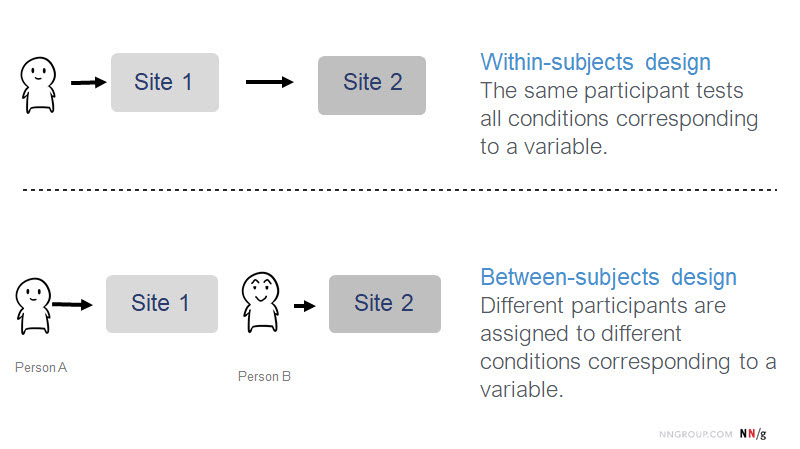
. Like in the previous example your experiment will most likely be composed of single or multiple reading tasks and your stimuli will be text excerpts. The first feature is the use of a single group of participants ie a. Another common example of a within-subjects design is medical testing where researchers try to establish whether a drug is effective or whether a placebo effect is in order.
Needs larger samples for high power. Between-subjects versus within-subjects design Youre planning to study whether taking a nap your independent variable after a learning session can improve test scores your dependent variable. It is possible that an experiment design is both within-subjects and between-subjects.
The researchers in the crudest form of the test will give all of the participants. For example assume that in the case of our car-rental study we were also interested in knowing how participants younger than 30 perform compared with older participants. Examples of Within-Subjects Designs from the Research Literature Example 1.
Three common circumstances lead to within-subjects designs. The withinsubjects ANOVA is appropriate for repeated - measures designs eg pretest-posttest designs within-subjects experimental designs matched designs or multiple measures. The differences between the two groups would then be compared.
These results demonstrate that it is possible to design an experiment with both. Another common example of a within-subjects design is medical testing where researchers try to establish whether a drug is effective or whether a placebo effect is in order. Advantages Disadvantages of Wi-Subjects Designs.
A one-group pretestposttest design is a type of research design that is most often utilized by behavioral researchers to determine the effect of a treatment or intervention on a given sample. More than 1 IV. For example assume a psychiatrist is looking for new medication to treat patients with Obsessive-Compulsive Disorder OCD.
This type of design is also referred to as a repeated measures design. Recall that another label for independent variable is factor. Due to the nature of the research question your participant design will be a within-subject design.
Examples of between-subjects design. Prevents carryover effects of learning and fatigue. Between-Subjects Within-Subjects and Mixed Designs page 1 Overview This reading will discuss the differences between between-subjects and within-subjects independent variables and will discuss some issues that are specific to studies that use each type.
In a between-subjects design people are only assigned to a single treatment. Using a within-subjects design. What is the goal of within subjects design.
Under 30 over 30. Ad Over 27000 video lessons and other resources youre guaranteed to find what you need. Another common example of a within-subjects design is medical testing where researchers try to establish whether a drug is effective or whether a placebo effect is in order.
The researchers in the crudest form of the test will give all of the participants the placebo for a time and monitor the results. If you use a between-subjects design you would split your sample into two groups of participants. Within-Subjects Designs Basic Within-Subjects Repeated-Measures Design.
Psychological Science 19 1037-1044. You can use either a between-subjects or a within-subjects design. Age with 2 levels.
Both Within- Between-S IVs. Is it important to prevent early exposure to drugs and alcohol among adolescents. Within-subjects studies are typically used for longitudinal studies as researchers can assess changes within the same group of subjects over an extended period of time.
Here are a few examples of between-subjects design testing sessions categorized by the industry conducting the tests. First each subject is observed repeatedly in different conditions and the same measure is used as the. The researchers in the crudest form of the test will give all of the participants the placebo for a time and monitor the results.
L Caspi A Nagin D. J Dickson N Poulton R Moffitt T. While a between-subjects design has fewer threats to internal validity it also requires more participants for high statistical power than a within-subjects design.
This within-subjects design can be compared to what is known as a between-subjects design. Within-subjects ANOVA however is more general than the paired correlated-scores t-test in that it also can be used with more than two repeated measures. 1989 applied similar methods and their results yield a between confidence-accuracy correlation of 014 and a within confidence-accuracy correlation of 017.
Repeated measures design is also referred to as within groups or within-subjects design. The between method results in a coefficient of 048 while the within method gives 031. This type of experimental design is when one set of participants are tested more than.
Other familiar experiments have a design with a distinct difference among the treatment and control groups. For example assume a psychiatrist is looking for new medication to treat patients with Obsessive-Compulsive Disorder OCD. In a within-subjects design a procedure to minimize threats from order effects and time-related factors by changing the order in which treatment conditions are administered from one participant to another so that the treatment conditions are matched with respect to time.
2 So one group of participants would receive one treatment while another group would receive a different treatment. Emilys study is an example of a within-subjects design which is sometimes called a repeated measures design. A within-subjects design refers to a study design where two or more measures are obtained from a sample of subjects.
Explicit Memory in Amnesics vs.

Between Subjects Vs Within Subjects Study Design
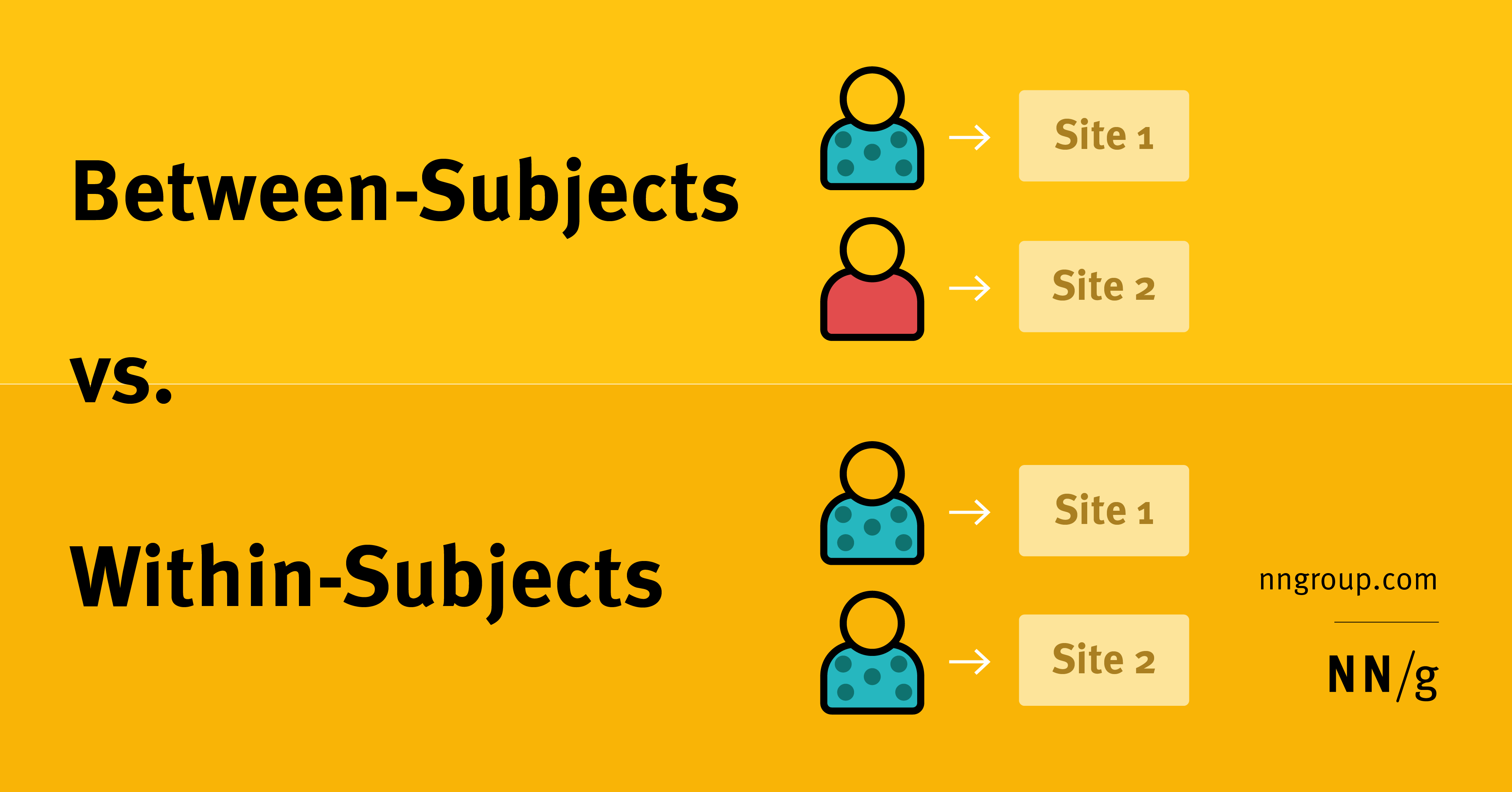
Between Subjects Vs Within Subjects Study Design

Within Subject Design Repeated Measures Design
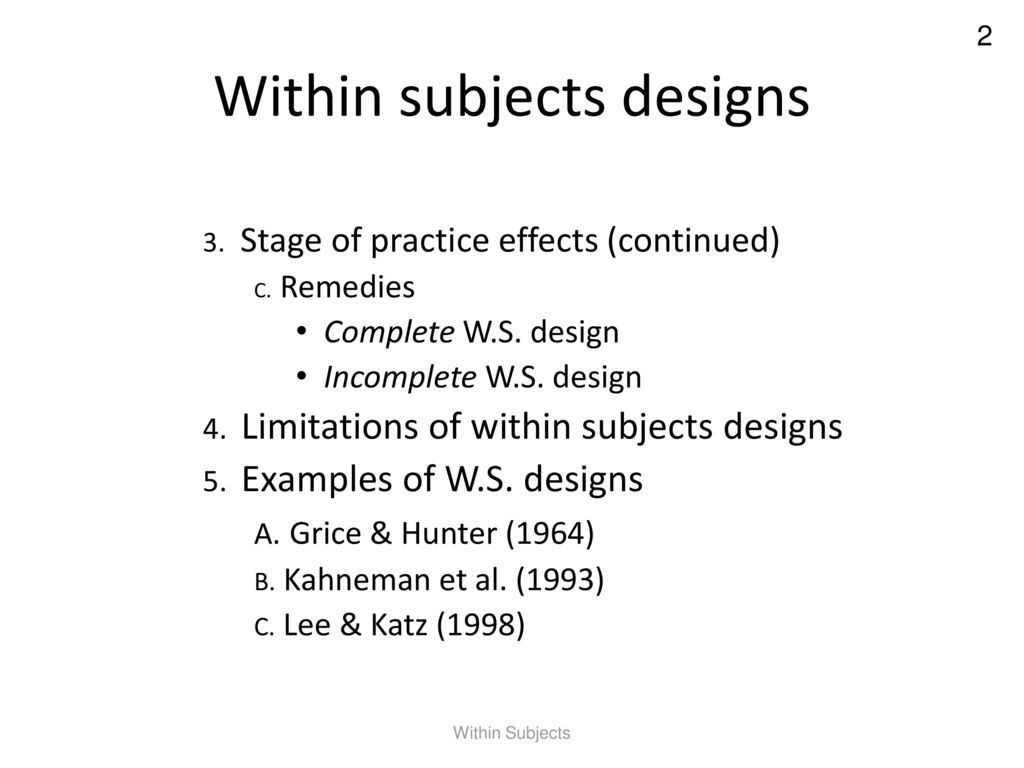
Within Subjects Designs Ppt Download
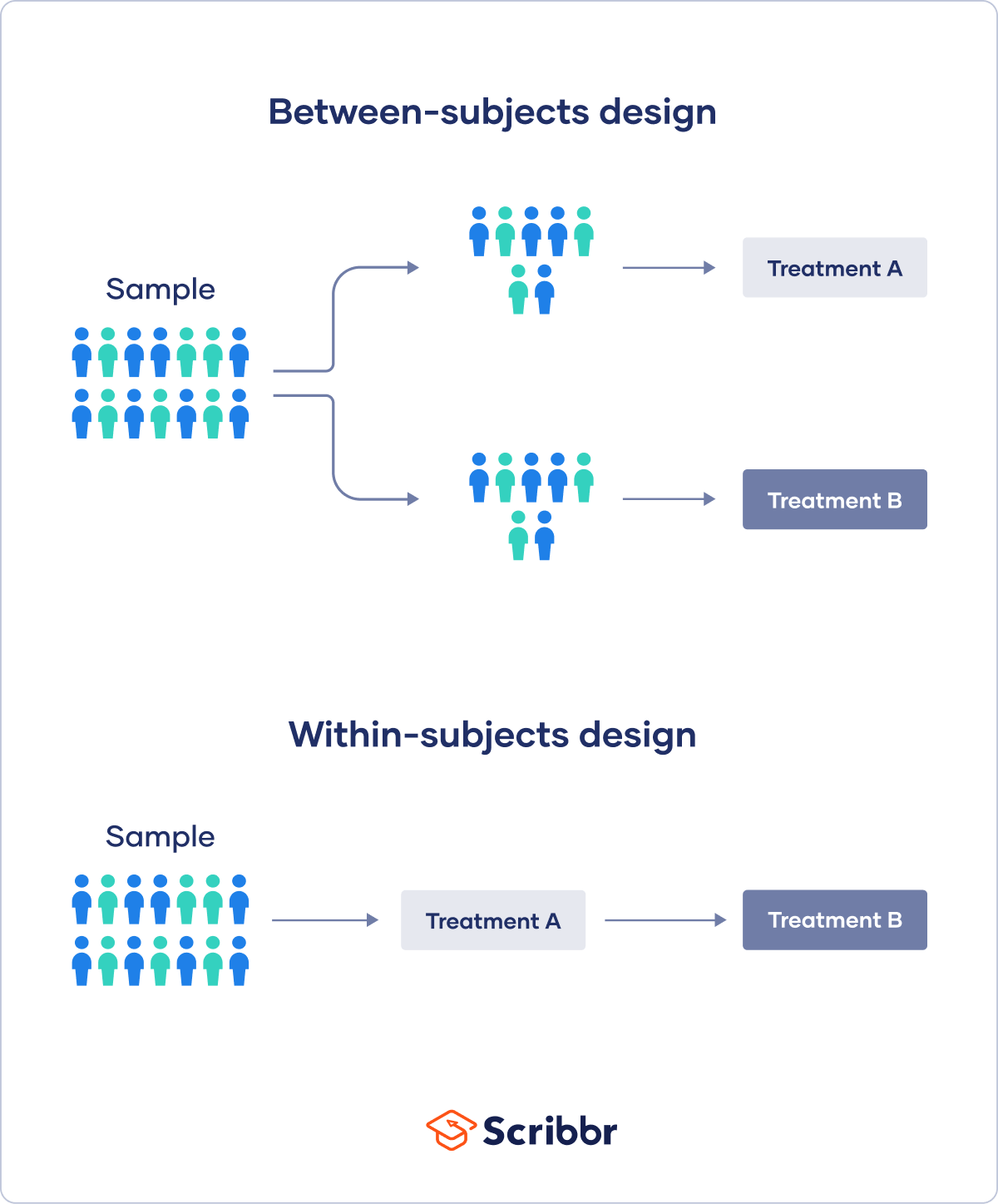
Within Subjects Design Explanation Approaches Examples
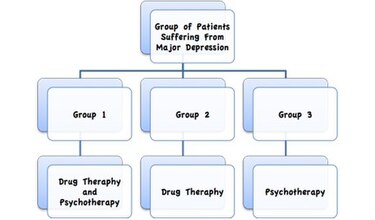
Between Group Design Wikipedia

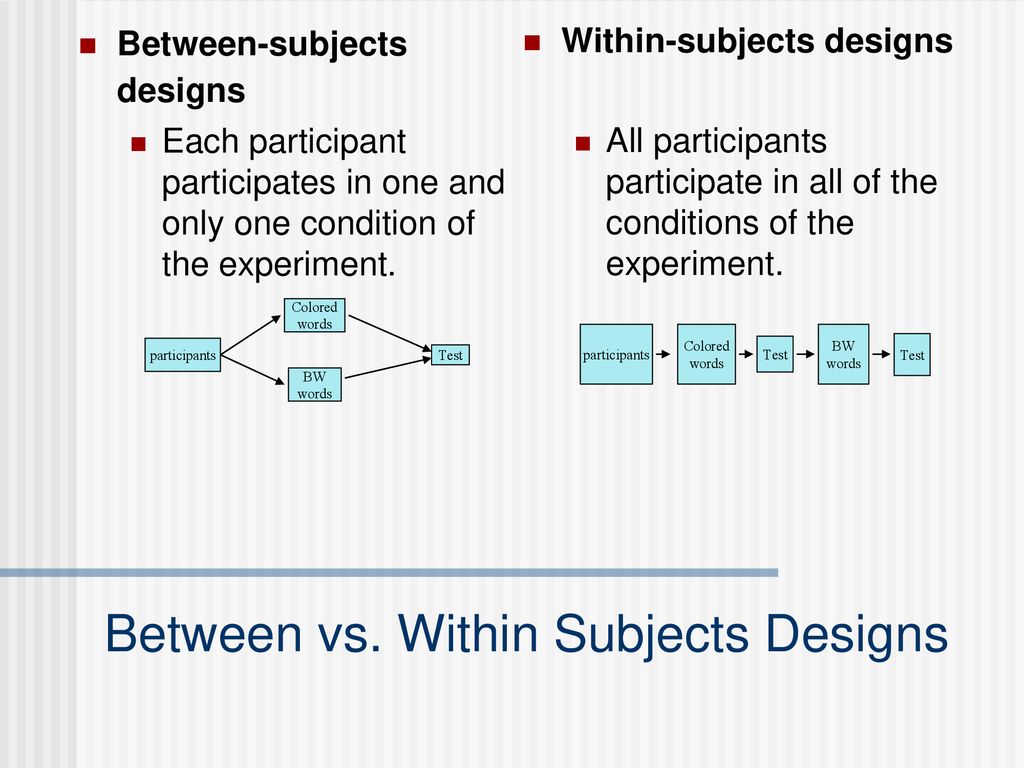
0 comments
Post a Comment